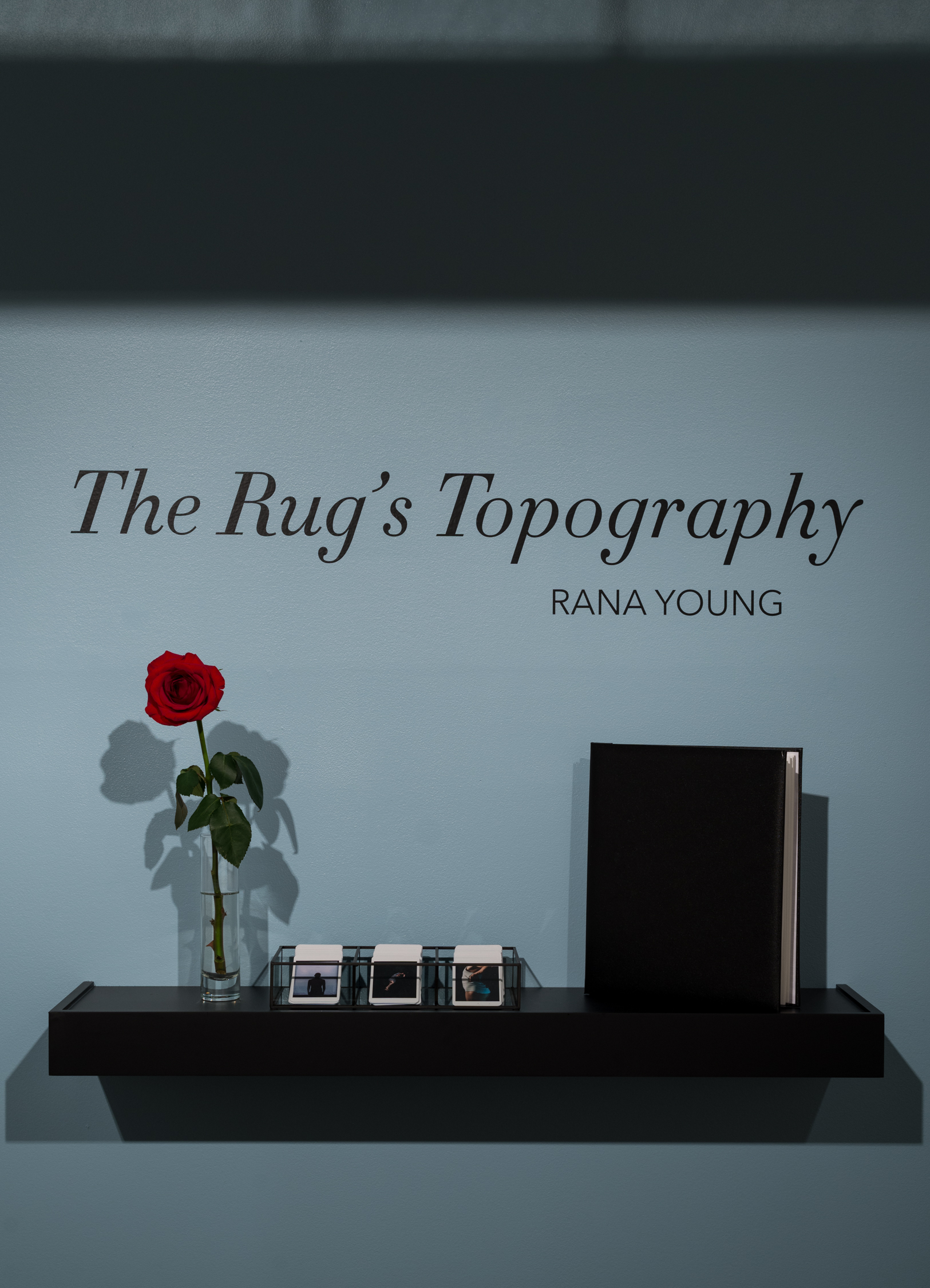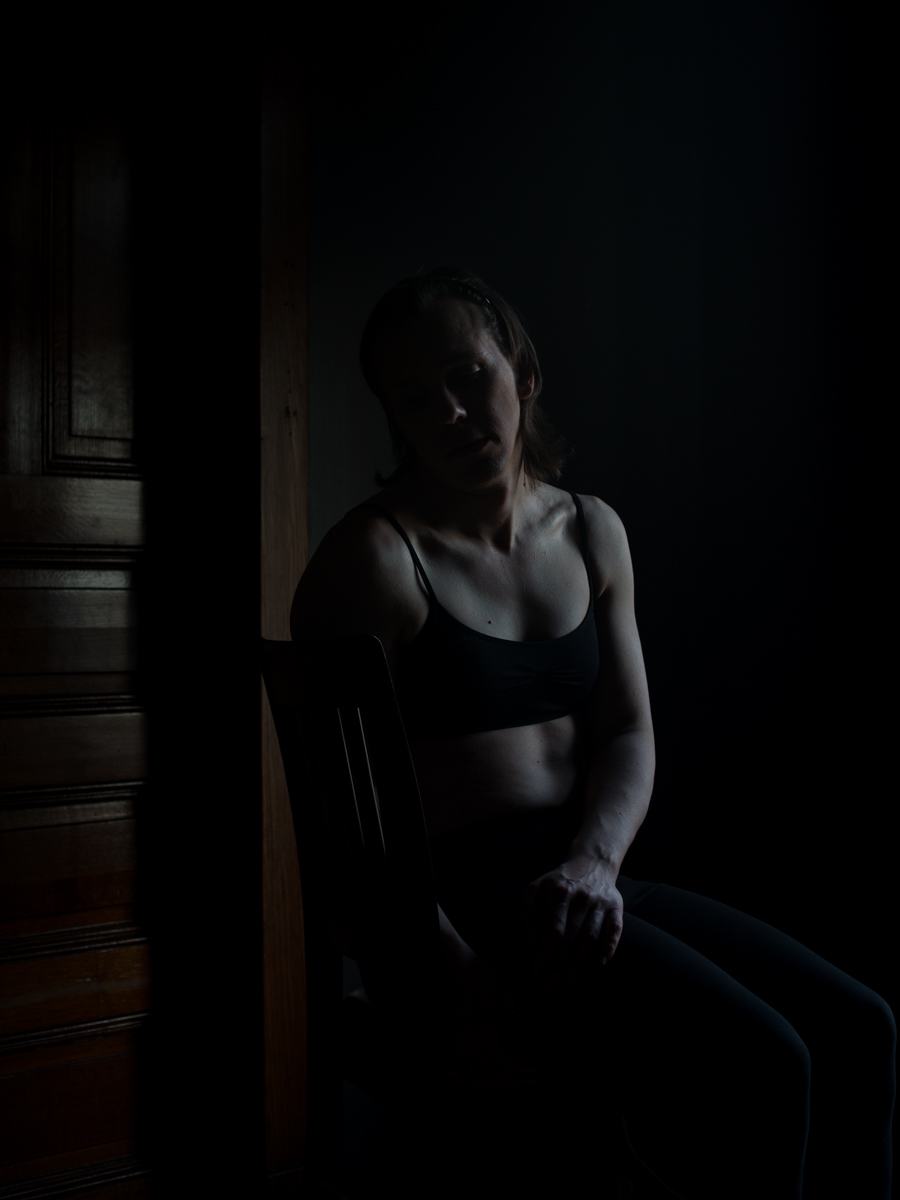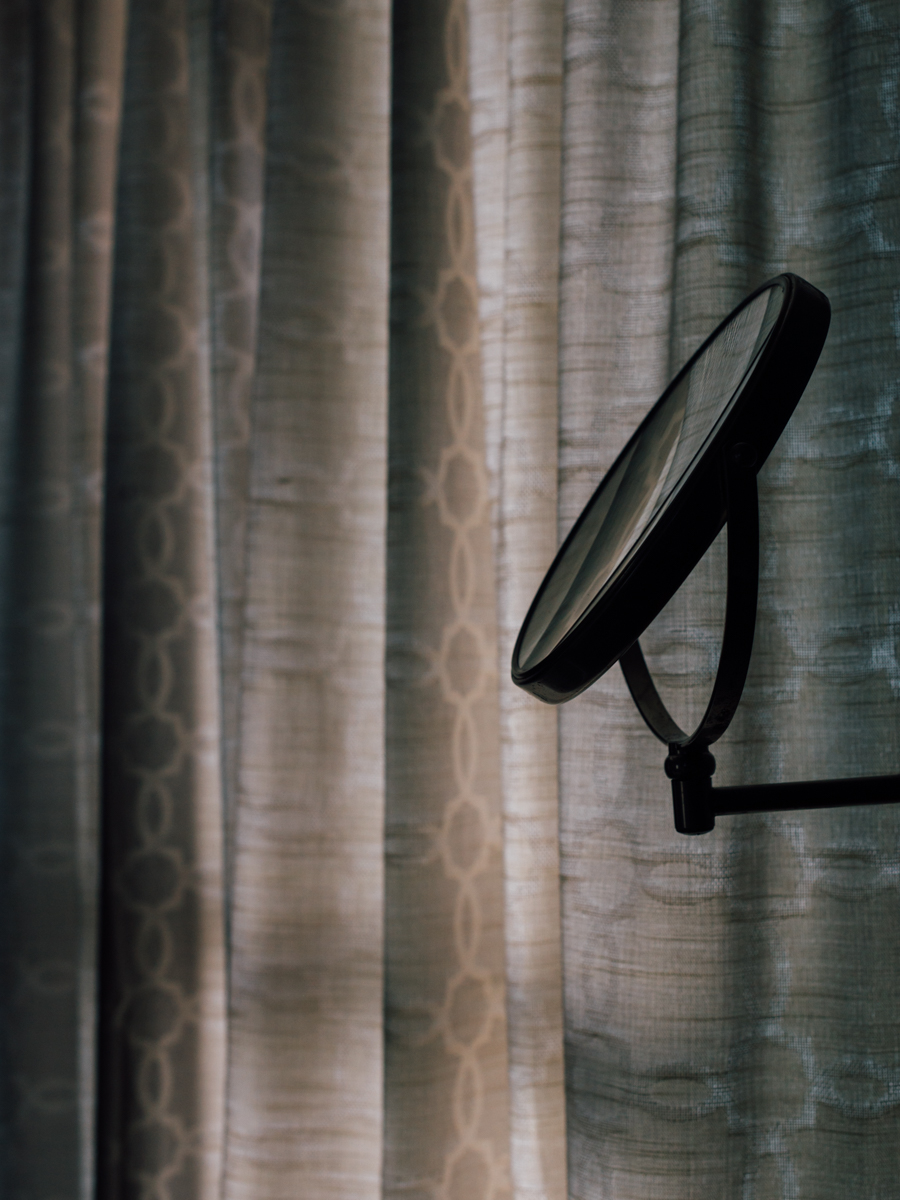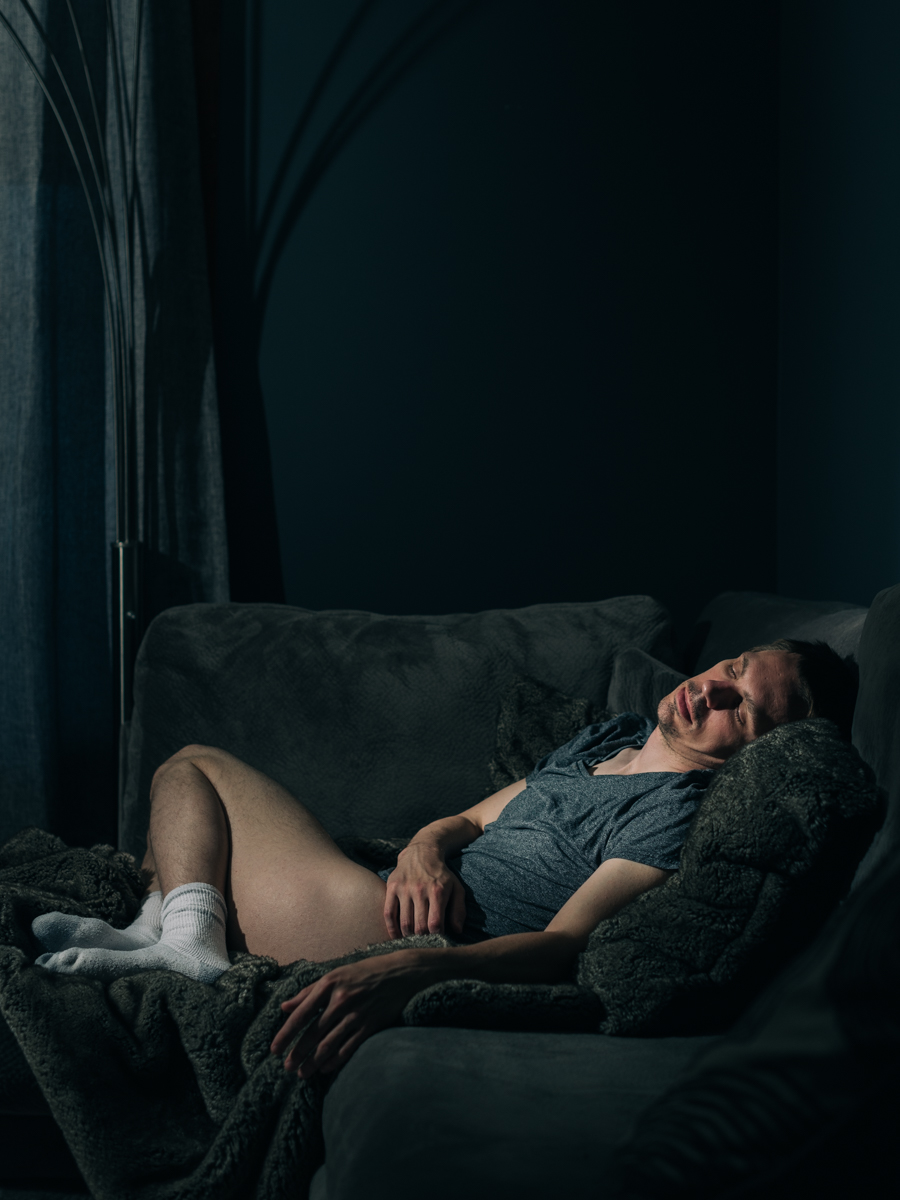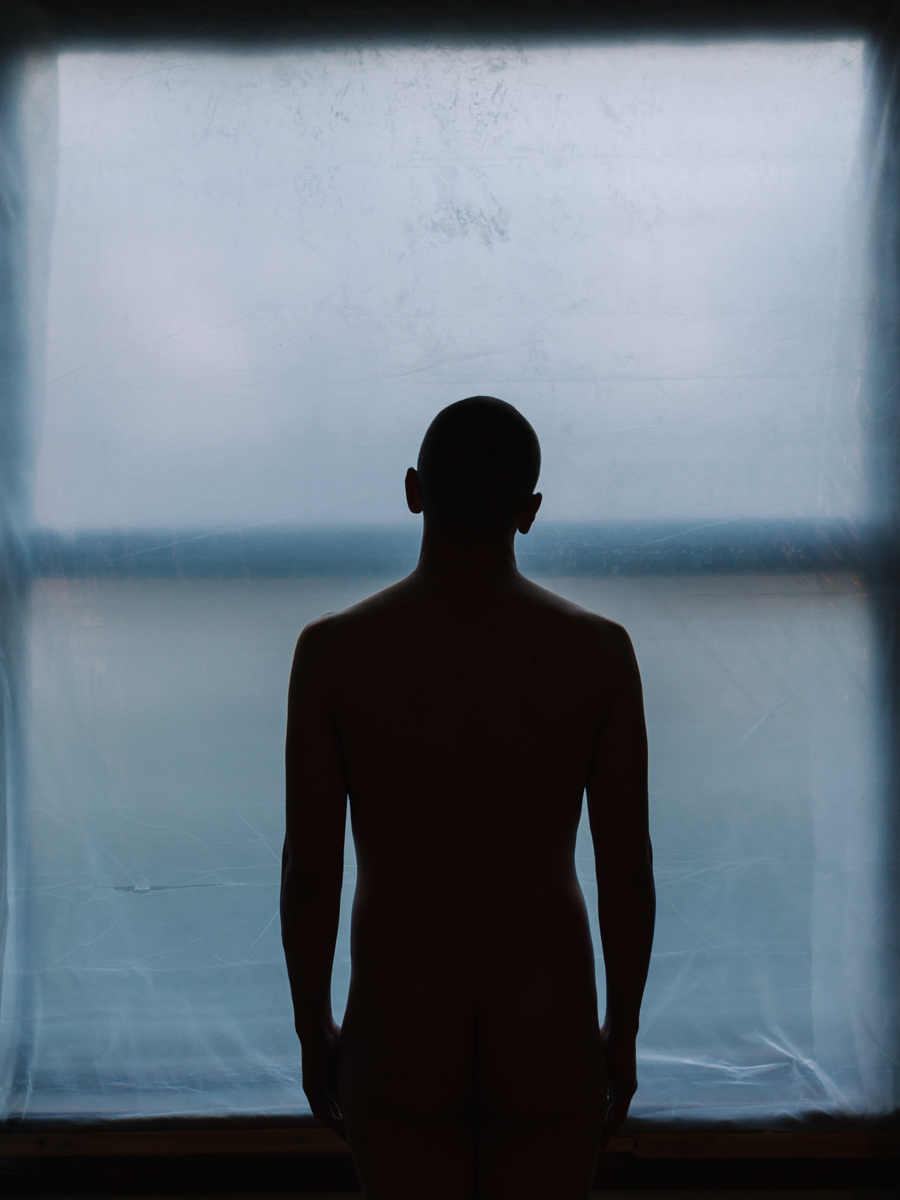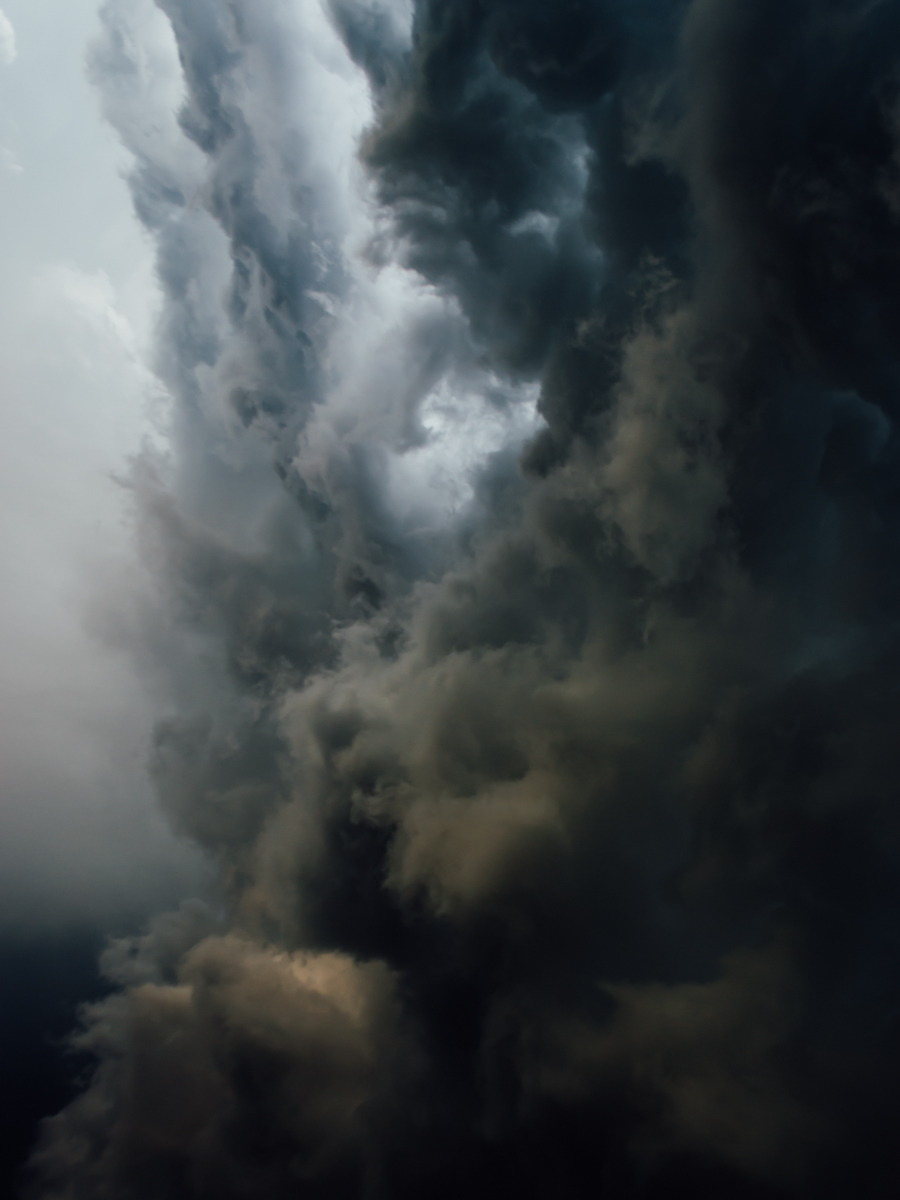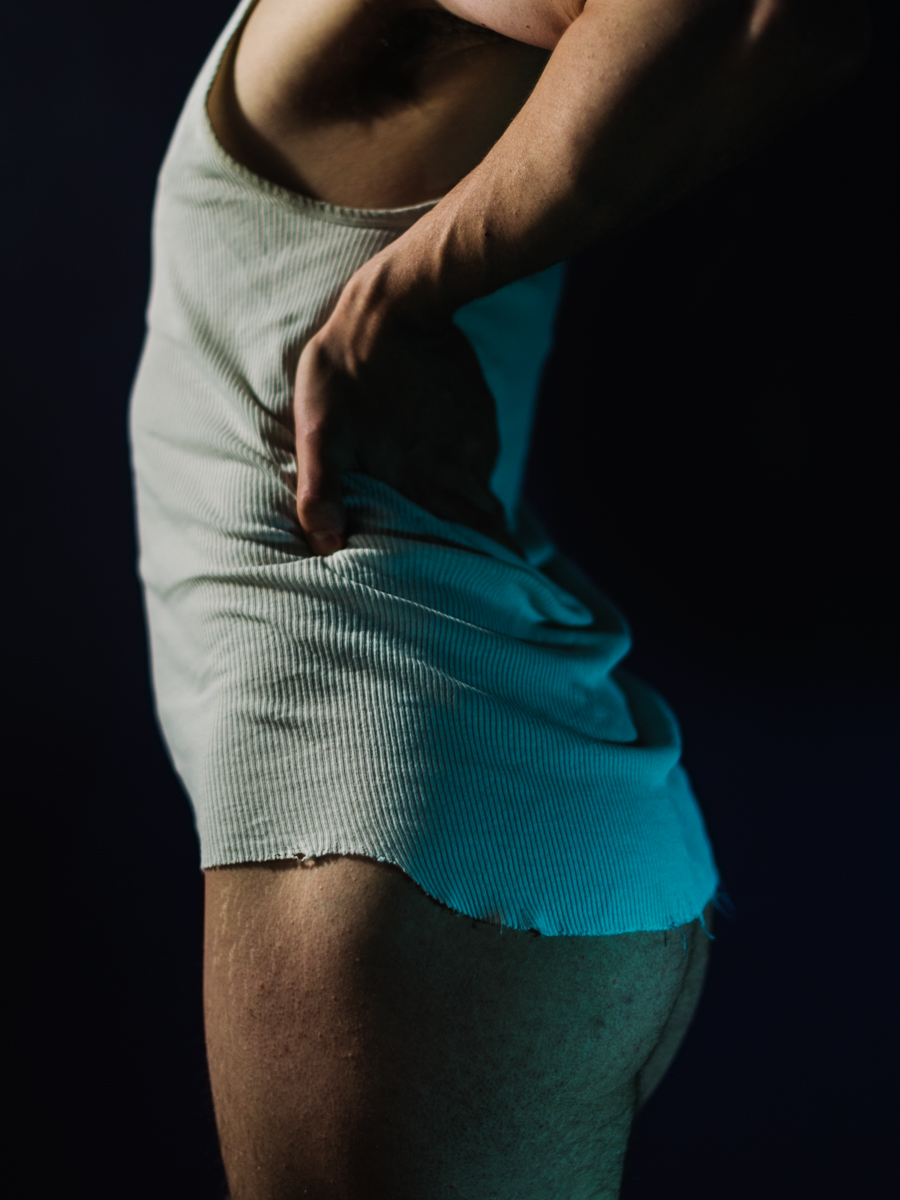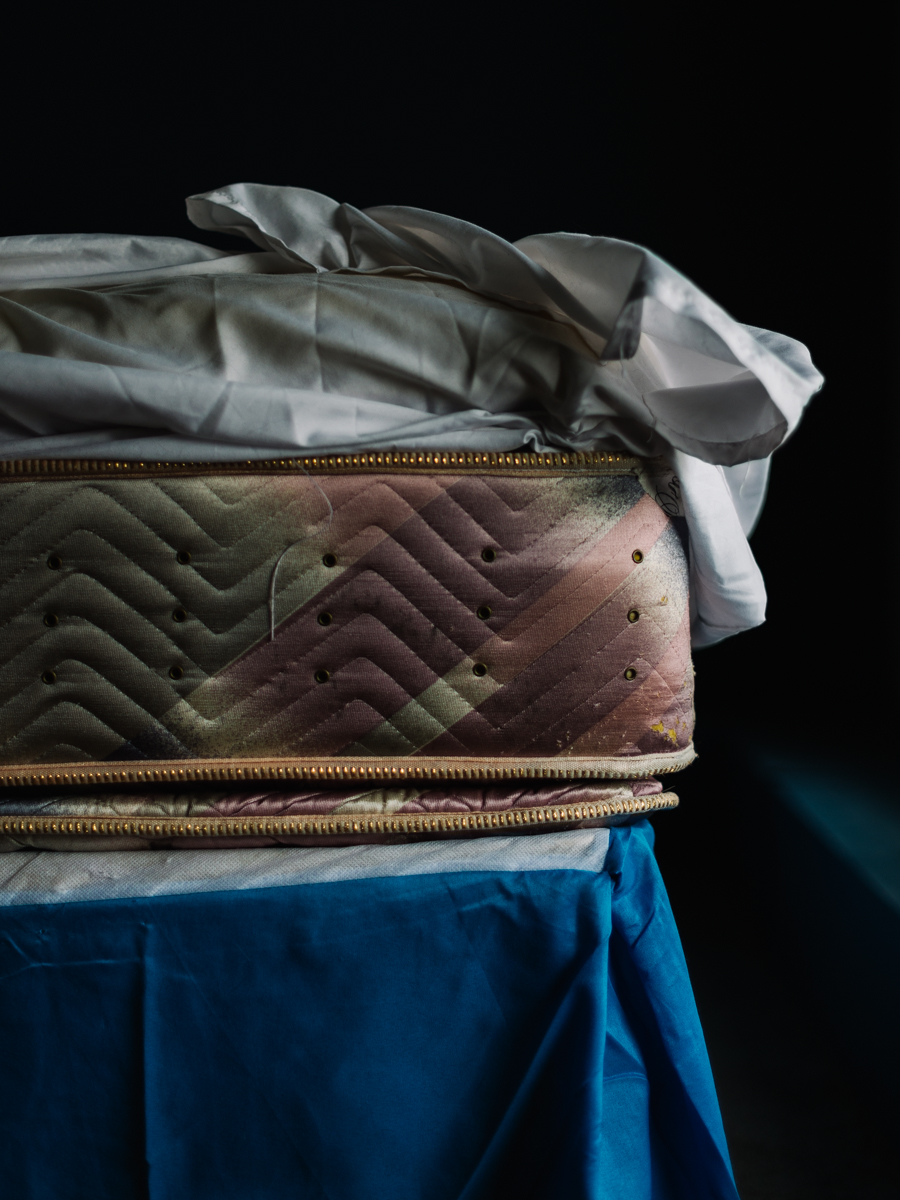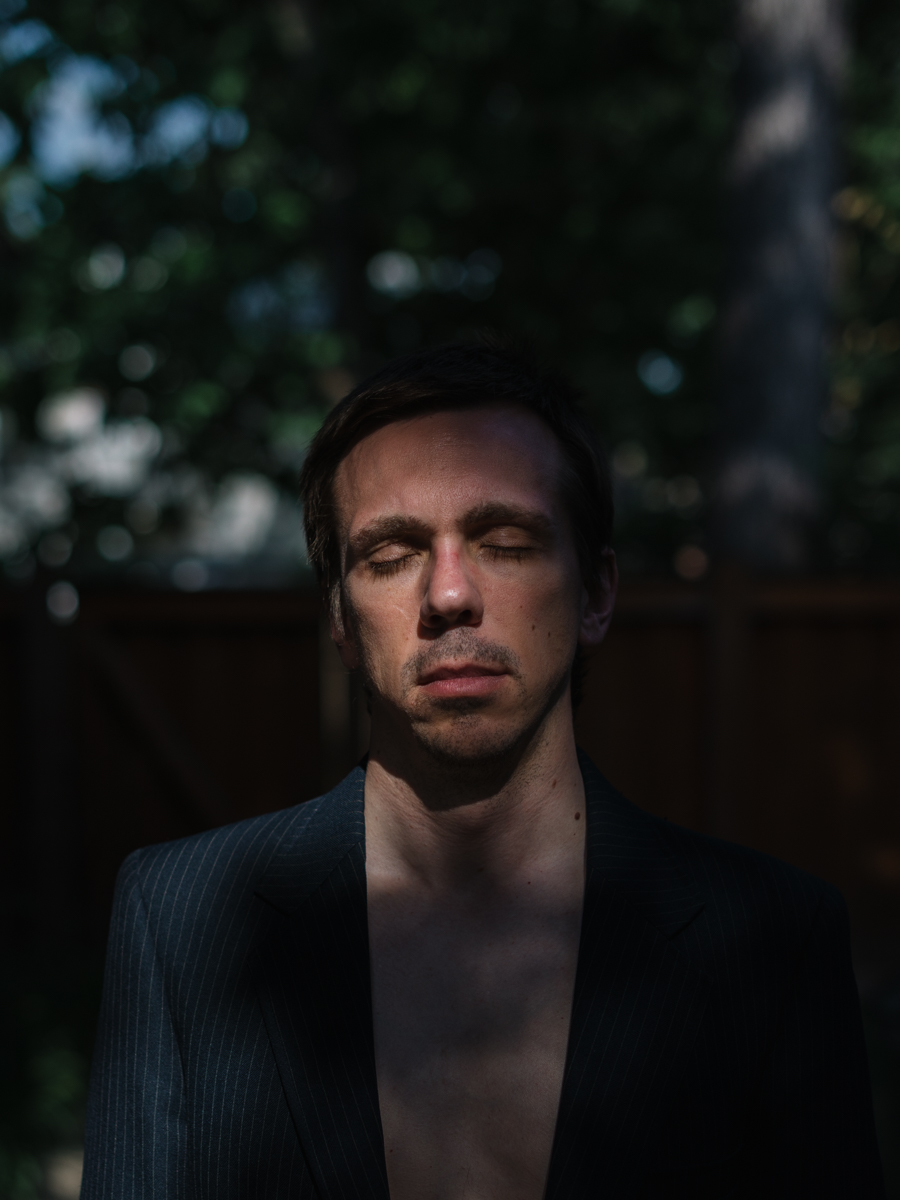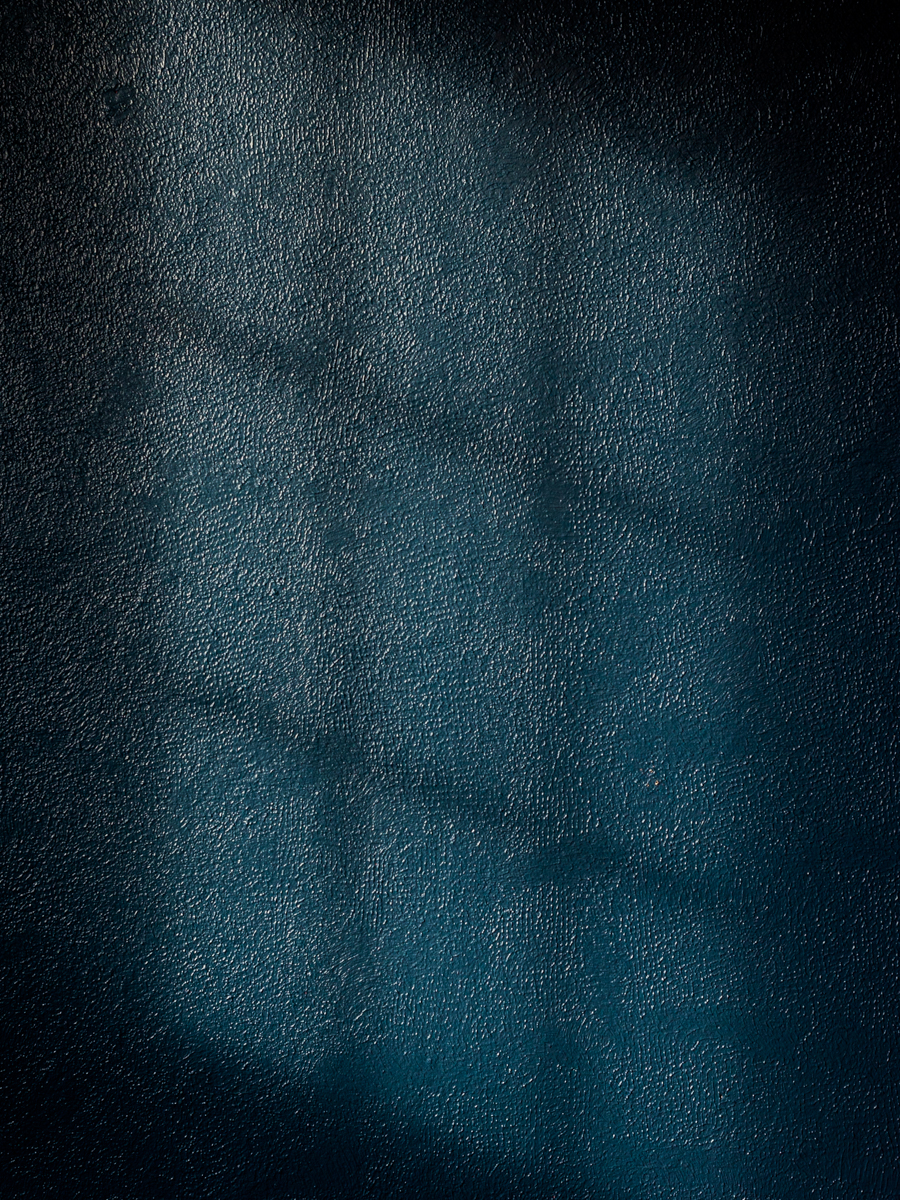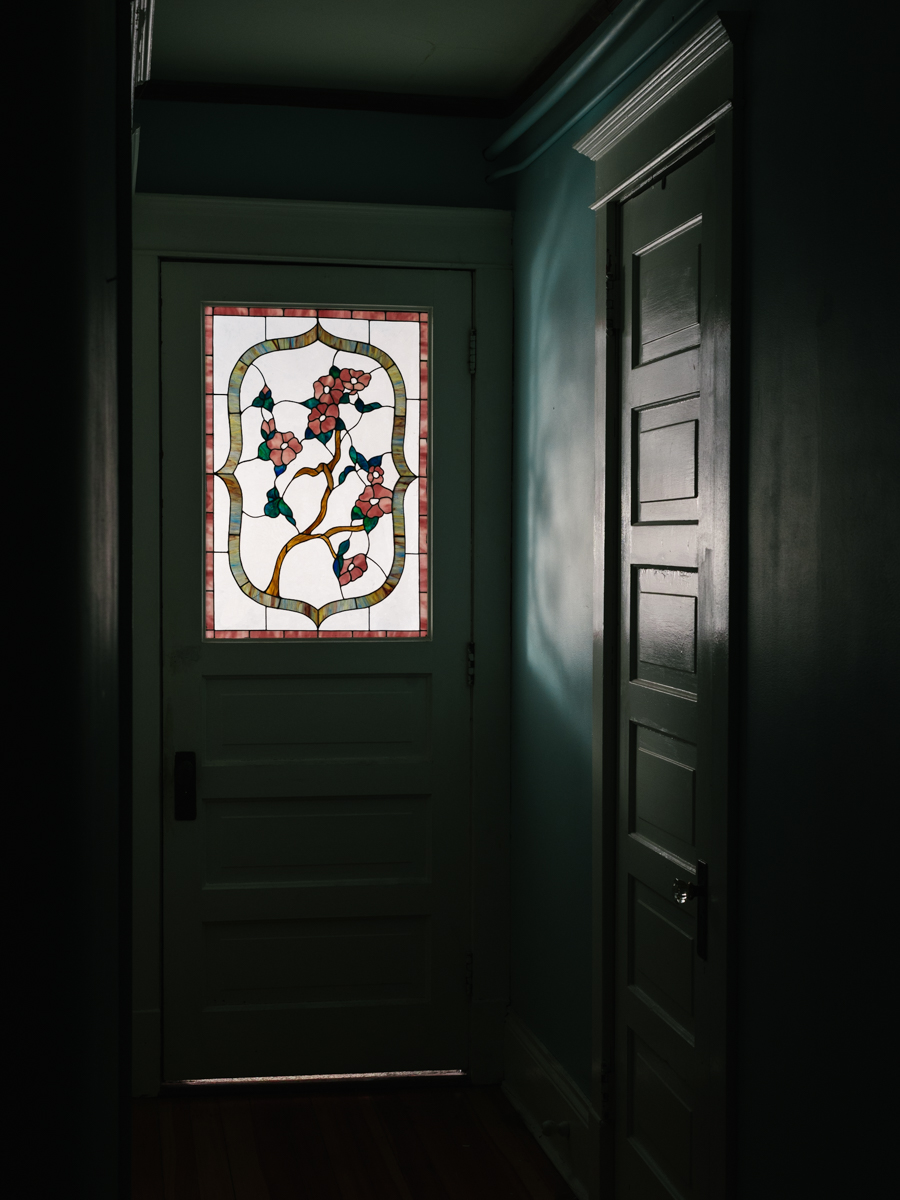Q&A: rana young
By Jess T. Dugan | June 1, 2017
Rana Young (b. 1983, Missouri) is an artist, educator, and currently serves as an Installation Photographer for the Sheldon Museum of Art. Rana holds an MFA in Studio Art from University of Nebraska–Lincoln and a BFA in Studio Art from Portland State University in Portland, Oregon. Her work has been exhibited nationally and internationally, as well as published online by British Journal of Photography, C41 Magazine, Lenscratch, Fraction Magazine, and Aint-Bad Magazine among others. Her current work explores such themes as intimacy, voyeurism, and transition within the home.
Matayla (Matty) Lewis, the subject of all portraits in The Rug’s Topography, joins Rana today to discuss her experiences collaborating on the series both in the midst of romantic separation and gender identiy transition. Matty lives and works in Lincoln, Nebraska.
Installation view, The Rug's Topography
Jess T. Dugan: Hello Rana (and Matty)! Thanks so much for taking the time to speak with me. I want to jump right in and ask about your project The Rug’s Topography, which is such a beautiful and complex elegy on identity, relationship, transition, and the self. How did this series begin?
Rana Young: Hi Jess — thanks for having us!
The how is complicated. I never intended to make photographs of this nature and, preceding the series, Matty never anticipated being featured so prominently in my work. We’ll start from the beginning.
Matty and I began dating in Portland, Oregon eight years ago. We related to each other deeply: both moving to the Pacific Northwest in our mid-twenties on a whim and both seeking the type of intimacy as adults we had not witnessed in our childhood homes. We shared an impulse to correct what went wrong in our families’ history; to cultivate a partnership that was whole. Our focus was pragmatic, directed by taking what we assumed were the logical steps to sustain a future together. We recognize now that we spent a great deal of time coasting on the surface, more concerned in our relationship with furthering our education, securing jobs, etc., rather than unveiling our individual desires and insecurities as we grew to know ourselves better. Four years into our relationship, I was set on pursuing an MFA in the Midwest. We were both originally from Missouri and were excited to be back on familiar ground. Within a year of moving, we were living very separate lives often on different schedules as Matty was beginning a career and I was beginning graduate school. Our interactions were becoming more friendly than romantic. This manifested feelings of uncertainty and widened the distance between us.
Installation view, The Rug's Topography
Matty: On my part, I had been privately struggling with gender dysphoria for a long time and these sentiments were starting to surface. At the same time, we had already been growing in separate directions in response to our incongruent life aspirations. In this light, part of the reason I kept my anxieties private was to preserve what we still had between us.
Rana: It was about this time that I began photographing Matty in an attempt to expand our dialogue. The initial focus of the work amorphously highlighted tension, privacy, intimacy, and a sense of isolation. Gradually, our personal narratives started to feed into the work.
JTD: In your writing about this series, there is a heavy emphasis on assumptions and expectations around gender identity, roles, and expression. This element is certainly present for me when I’m viewing the work, but I am almost more struck by even larger ideas around individual identity in the context of relationship and how those two things are always constantly in flux, interacting in sometimes complimentary and other times contradictory ways. To what extent was this latter point a conscious element in the making of this project? Is it something you were conscious of from the beginning or something that emerged more naturally as the series developed?
Rana: Because of our shared upbringing, we occupied roles in our relationship based on cultural expectations. We were naive and inexperienced when we first got together. As we became more honest with ourselves and each other, the context of our relationship subsequently changed. Our individual growth seemed increasingly at odds with the longevity and interest of our partnership. While we may not have consciously set out to create work engaging these developments, the influence of them were always present even at the start. Over time, we began to intentionally emphasize these conditions after they had already been emerging organically.
Matty: For me, it took some time before I acknowledged that my individual growth played a role in influencing this work. I now see that my own anxieties and insecurities were reflected in subtle ways throughout my early appearances in the imagery, even before I started to consciously acknowledge my identity. As time went on and I began the process of gender identity transition, I immersed myself in a process of self-discovery and contemplation that unearthed much of what had been buried in my unconscious mind. As this happened and we were still making the work, I started to realize how much this is about both of us, the individual paths that led us here, and our shared connection with one another that still remains.
JTD: One of the things I find the most moving about this series is your commitment to documenting a kind of intimacy even as the conditions of your relationship with your intimate partner shifted from a romantic partnership to a more platonic one. How integral was the act of photographing to this shift? Were there things that surprised you along the way?
Matty: I will jump in first on this one. Even before our relationship ended and I consciously came to terms with my gender identity, the process of creating this work was therapeutic for me and enabled me to outwardly express what I had been feeling inside. This opportunity expedited my transition and was invaluable for preserving our emotional connection.
Rana: By the time we completed this, our lives were in completely different places and we had both undergone tremendous personal growth. Creating this work together helped nurture our emotional connection and visually archive this time in our lives. We have found that other people are often surprised that we were able to remain close enough to create this work together and did not sever ties more abruptly.
JTD: You write about these photographs as being “blended self-portraits, expressing our emotions in relation to who we were and who we’ll become.” As I was looking through the photographs, I found myself curious to see literal self-portraits as well. Is this something you considered for the project or would consider adding in the future?
Rana: I definitely considered more direct self-portraits and even made a few. It honestly just never felt right seeing myself literally in images next to ones featuring Matty. I struggled with it for a while, often feeling like the work was too one-sided or it depicted an imbalance of power in regards to our dynamic. My fear was that the work would imply that I had the upper-hand. However, I did feel that enough dichotomies were already present and ultimately did not want to push that further by featuring both figures. We talked a lot about how to represent both of us and ultimately decided on employing feminine interventions to suggest my presence in the work. I was able to be very methodical in directing Matty and spent a great deal of time analyzing what I saw through the viewfinder.
Matty: My role as subject was to channel both our emotions and I do not look at all of the work as portraiture of me. Even though I am the only figure featured, Rana is just as much represented as I am in the sense that I am sometimes embodying her presence more than my own when enacting a particular gesture or wearing her garments. We both have looked back on particular photographs after time has passed and can see ourselves reflected in ways we did not acknowledge at the time. As such, I think that this representation was perhaps more authentic than the conscious presentation of ourselves. Simply, I feel the work inherently implies balance because I would not have granted this intimate level of access to anyone else.
JTD: Rana, I’m interested in your use of a voyeuristic gaze. Throughout the series, we as viewers are never met with direct eye contact from Matty. What made you decide to employ this kind of voyeurism and what do you hope it evokes in the work?
Rana: I wanted to suggest a narrative without providing resolve. The absence of direct eye contact evokes an intimate moment of self-discovery that is witnessed voyeuristically. This yields ambiguity in regards to where we place ourselves as viewers. The narrative is intended to be cyclical and non-linear, reflecting on the past and projecting the future. Direct eye contact felt too suggestive of a present moment. I coupled this technique with other elements to produce a meditative viewing experience. Subtle peeks of release begin to emerge from what appears to be a melancholic reflection on the subject’s private experience.
JTD: I am drawn to your use of extreme light on both the dark and light end of the spectrum. For me, this infuses the work with an intensity that parallels the emotional transition you are depicting. I am also particularly drawn to the still life and detail shots in the work and find that they range from the more narrative (the photographs of underwear and shirts) to the more metaphorical (the photographs of clouds, light, and reflections). How do you view these images within the larger project? Did you actively seek them out or did they manifest themselves to you along the way?
Rana: We continued living in the same home as roommates upon our separation and it remained the vantage point for every photograph in the body of work. The ambient photographs speak to particular times of both uncertainty and comfort and also serve as visual breaks between portraits. The overall aesthetic of this series is created with what I consider to be dichotomous renderings of our experiences. Contrasting tropes of gender (gesture, body hair, garments, use of color), privacy (windows, threshold, mirrors), and light versus shadow, all aid in maintaining the tension which is present during times of great upheaval. Although these representations are heightened in post-production, it was important for me to depict our shared environment without taking liberties to manipulate the space directly.
JTD: Do you consider this series completed? If not, what do you feel it needs to be completed? If so, do you have another project developing or in the works?
Rana: It is. We decided to stop making images for this particular body of work once Matty began hormone replacement therapy a couple of months ago. We’re looking forward to hanging out without the camera for a while, although we will begin designing a book layout for the work soon.
JTD: What is on the horizon for you as an artist?
Rana: I have some other things in the works that I’m pretty pumped about — a few solo projects and another collaborative body of work. I just shipped out a piece to be included in the Magic Mirror group exhibition at Daniel Cooney Fine Art in New York, NY. The opening reception is on June 22nd and the exhibition will be on view until July 21st. I’ll be teaching a lot next year here in Nebraska, too! I’m excited to keep making stuff, furthering my teaching experience, and catching up on all the sleep I lost in grad school.
JTD: Thank you so much, Rana and Matty!
All images © Rana Young








